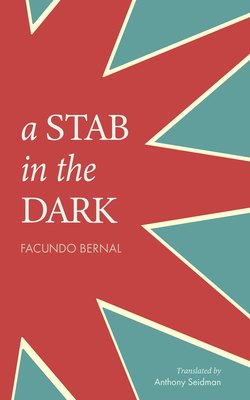Читать книгу A Stab in the Dark - Facundo Bernal - Страница 6
ОглавлениеTranslator’s Foreword
In Palos de ciego Facundo Bernal employed a variety of rhyme schemes and meters typical of popular verse and of Latin American Modernismo. At the time, this prosody was rapidly becoming passé, yet Bernal used it with great dexterity. The macaronic rhymes and the insertion of popular dichos (sayings) make for a rich impasto, but the main aesthetic shock comes from Bernal’s use of Mexican slang. The result is a thrilling clash of popular and lofty literary registers, English, and words that would eventually become part of the border’s argot, Caló.
Several difficult decisions had to be made in order to provide an English version of Palos de ciego that would best guide the reader through Bernal’s rollicking depiction of the borderlands. If I were to recreate the prosody exactly, the poems would sound like doggerel. Employing the meter of the English ballad would produce an anachronistic cultural mishmash. I flirted with the idea of using Blues-like structures for some of the poems. Out of despair, I even contemplated resorting to prose-block paragraphs for absolute fidelity to the text…
After deliberation, I decided that the best way to recreate this book as oral poetry was to echo the Caló, the slang, and the overall exuberant and spunky tone of the original, abandoning rhyme. Wherever possible, I relied on alliteration for comical effects, and I inserted contemporary American slang when appropriate. The art of “poesía para declamar” hasn’t passed from the school halls and bars of Latin America; I worked to create poems that were fun to read aloud while remaining acceptably accurate. I aimed for line breaks and line lengths that were a compromise between Bernal’s original Spanish and the contemporary America poetic mode, post-William Carlos Williams, Robert Creeley, et al. My priority was to preserve the popular speech. Indeed, words like “bichi” (Northern Mexican Spanish for “naked,” derived from the English word “beach”) pepper the text, as do idioms — for example, the collection’s title. “Dar palos de ciego” (literally, “to thrash with the stick of a blind man”) implies to struggle vainly, clutching at straws, but also alludes to the blind man’s cane and to Míster Blind, who appears as one of the characters. Many thanks to Boris Dralyuk, who suggested A Stab in the Dark as a reasonable transformation of the Spanish title into English. I then incorporated this titular motif into the poems wherever there is mention of blindness, canes, and the thrashing of canes.
This English version includes the entire text except for one delightful short poem titled “Eche usted nombre de frutas,” which relies entirely on puns. It lists fruits, many of which don’t have a proper name in English, and are known by loan words such as “mamey.” The Spanish text speaks for itself in the second half of the book.
It’s important to note the publication year of Bernal’s collection: 1923. A year prior, César Vallejo published his masterpiece Trilce and forever changed the Spanish poetic mode, with his pioneering use of white space, his radical new line breaks, and his neologisms. The Creacionismo of Vicente Huidobro was making a buzz in the literary world, and the avant-garde poet Kyn Taniya was taking off with his Aeroplane. All of those works were more transformative for Spanish literature at large, but A Stab in the Dark was the first collection of poetry to reflect the border, the Mexican north, the reality of Mexicanos in Los Angeles, and the nascence of Chicano culture, all in a Spanish that is uniquely Bernal’s.
I first discovered Bernal’s poetry on the bookshelves of my wife, the cachanilla detective fiction writer Nylsa Martínez — mostly in Gabriel Trujillo Muñoz’s anthologies and essays on Baja California literature. I owe her many thanks for helping me understand the more difficult passages, as I made my stabs in the dark. Thanks also to the poet and critic Martín Camps, who helped me on other passages, and for his years of friendship. Thanks to Gabriel Trujillo Muñoz for providing us access to the works of Facundo Bernal, as well as for his enthusiasm with regards to the project. And very deep gratitude to Boris Dralyuk, for thinking of me when planning this project.
As always, my guide in translation is Paul Blackburn, whose Poem of the Cid has been my beacon for many years. I will lift his words for this book: Please enjoy it, and remember, read it aloud.
Anthony Seidman
San Fernando Valley
2018
